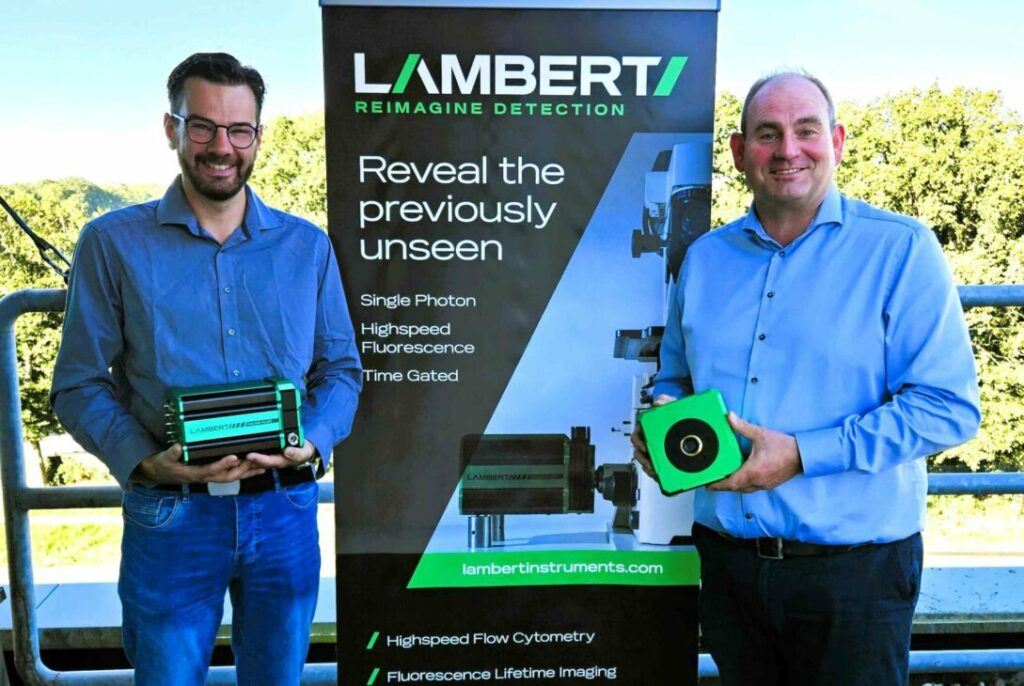< Back
Intensifier Control
Tibidabo Scientific Industries Expands Space & Scientific Imaging Capabilities with Acquisition of XCAM
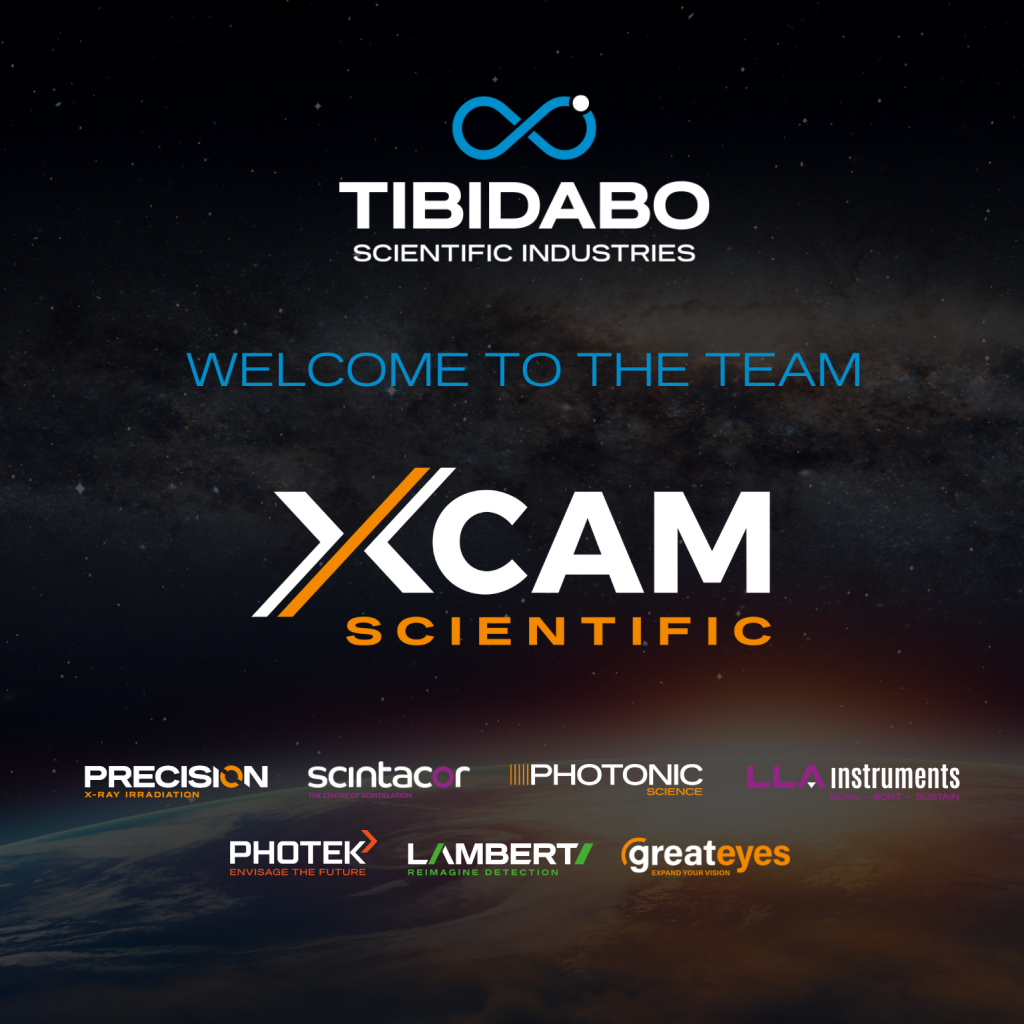
Northampton, UK and Dublin, Ireland, Tuesday, Dec 16th – Tibidabo Scientific Industries Ltd (“Tibidabo”), a global leader in advanced imaging technologies for the scientific, space, and industrial markets, is delighted to announce the acquisition of XCAM Scientific Ltd (“XCAM”), a world-class developer of complete camera systems, with demonstrated history in vacuum-compatible applications and large-area, multi-detector solutions. This strategic milestone builds on XCAM’s distinguished heritage and reinforces Tibidabo’s commitment to advancing next-generation imaging.
Paul Murtagh, Chairman & CEO of Tibidabo, said, “We are thrilled to welcome XCAM Scientific into the Tibidabo group. Their world-class expertise in custom imaging solutions, space-qualified camera systems, and mission-critical cameras is an excellent complement to our portfolio and will enable us to push the boundaries of what is possible in space science and advanced instrumentation.”
Karen Holland, CEO of XCAM, added “Joining Tibidabo provides exciting opportunities to scale our business and collaborate across a more globally integrated team. We look forward to contributing our technical expertise and advancing the deployment of our imaging systems across both current and future space missions, while leveraging Tibidabo’s global reach, commercial infrastructure, and shared commitment to innovation and advancing science.”
XCAM has established a strong track record in delivering bespoke imaging systems for high-impact space missions. Recent achievements include advanced EMCCD technology for NASA’s OGRE mission, a high-performance camera for the WindCube “CubeSat” to measure thermospeheric winds in partnership with UCAR, and ESA’s forthcoming Particle Fallout Monitor for Ariane 6 to safeguard payload integrity. XCAM also supplied electronics and controllers for the C3D2 camera on the AlSat Nano CubeSat Mission, successfully demonstrating operational performance in orbit and increasing the TRL of its space-qualified electronics.
In addition, XCAM has secured significant support from the UK Space Agency (UKSA) and the Centre for Earth Observation Instrumentation (CEOI), enabling the development of ultra-low-light, CubeSat- compatible camera systems and strengthening international partnerships, including mission collaborations with ISRO.
About XCAM Scientific
Headquartered in Northampton, UK, XCAM Ltd has more than 30 years of experience delivering innovative CCD- and CMOS-based solutions for the most challenging imaging applications. In addition to a portfolio of standard products, XCAM is a recognized leader in the design and manufacture of complete camera systems, with proven expertise in vacuum-compatible technologies and large-area, multi-detector solutions. Their imaging systems are deployed across space, scientific, and industrial programs worldwide. For more information on XCAM products and applications, please visit https://xcamscientific.com/
About Tibidabo Scientific Industries
Tibidabo Scientific Industries is a global leader and supplier in highly differentiated technology for scientific research, aerospace, and industrial markets. We succeed by helping customers push boundaries in radiobiology, stem cell research, high-performance imaging, radiation detection, surveillance, space exploration and advanced scintillators. With our roots dating back to H2S phosphor screens in radar critical to the Allied defense during World War II, the impact of our products is now felt from the deepest recesses of the earth to the far reaches of space. Our collaborative approach and expanding global team enable our customers to make smarter decisions and adopt more effective solutions with ground-breaking technologies. For more information on Tibidabo Scientific Industries’ global presence, please visit https://tibidaboscientific.com/
LIFA FLIM Camera Powers Breakthrough pH Imaging in Clean Energy Research at Delft University of Technology

At the forefront of advanced electrochemical research, our LIFA FLIM (Fluorescence Lifetime Imaging Microscopy) camera and software have proven instrumental in enabling high-resolution imaging and real-time analysis of pH dynamics. Most recently, our system was pivotal in a groundbreaking study at Delft University of Technology, advancing the understanding of next-generation hydrogen technologies.
In a recent publication by researchers Nathalie Ligthart, Julius Sommer, Jorrit Bleeker, Lorenz Baumgartner, Johan Padding, and David Vermaas from the Department of Chemical Engineering, the LIFA FLIM system was used to visualize real-time pH fluctuations during hydrogen evolution on a single millimeter-sized particle. This particle model represents a single unit of a three-dimensional electrode—critical for optimizing electrochemical systems used in clean energy generation.
This work provides unprecedented insight into the microenvironmental behavior of active catalysts and has significant implications for designing efficient, scalable hydrogen production systems. By capturing fluorescence lifetime changes with sub-micrometer resolution, the researchers were able to correlate pH dynamics directly with electrochemical activity in real time.
We’re honored to support leading academic institutions and pioneering researchers working toward a clean, electrified future. Our LIFA FLIM solutions are designed for precision and adaptability, making them ideal for applications in materials science, cell biology, biophysics, and energy research.
🔬 Learn More:
Explore how LIFA FLIM can support your research or imaging needs: https://lnkd.in/eDnzqVem
📄 Read the full peer-reviewed publication here: https://lnkd.in/ezhm2YNs
Advancing Combustion Research with HiCATT: Lambert Instruments Technology Featured in Tohoku University Study
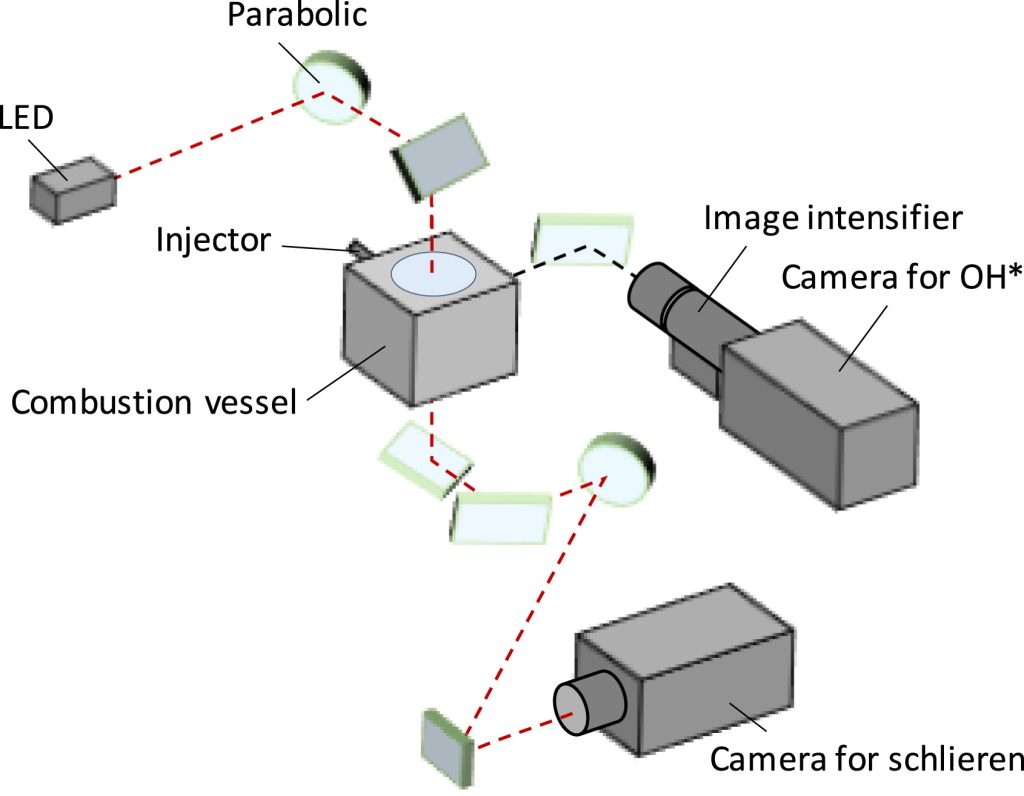
At Lambert Instruments, we’re proud to see our HiCATT intensified camera system at the heart of innovative combustion research conducted by Tohoku University. This groundbreaking study pushes the boundaries of predictive combustion modeling by integrating advanced data assimilation (DA) techniques with high-speed imaging—paving the way for more accurate engine simulations and energy applications.
Research Focus: Improving Spray Penetration and Ignition Delay Simulations
The research team investigated how to improve spray penetration dynamics and combustion ignition delay predictions in engine simulations. Traditionally, these simulations rely on Reynolds-averaged Navier–Stokes (RANS) equations, which can struggle with accuracy due to physical assumptions and variability in combustion behavior.
To address this, the scientists applied:
- Data assimilation techniques
- Schlieren imaging
- Ensemble Square Root Filters (EnSRF)
- Two-component velocity distribution models
What makes their work truly innovative is that they achieved high precision without modifying the core governing equations—instead, they enhanced the data input using advanced statistical methods. One of the most notable breakthroughs was how the team tackled the variability in ignition delay time even under identical conditions.
The HiCATT’s Role: High-Speed, High-Resolution Imaging
Our HiCATT intensified camera system played a crucial role in capturing the high-speed events within the combustion process. By enabling *OH chemiluminescence imaging at 30,000 frames per second (fps)**, HiCATT provided the temporal resolution needed to observe ignition events in fine detail.
Paired with a high-speed CMOS camera, the HiCATT intensifier delivered:
- Enhanced sensitivity to low-light emissions (e.g., OH* radicals)
- Crisp, high-speed visualization of ignition fronts
- Quantitative data to feed into simulation models
This precision imaging allowed the researchers to accurately quantify ignition delay time, reinforcing the model’s reliability and strengthening the foundation for future combustion diagnostics.
Learn More
Read the full publication: Link to study
Discover more about HiCATT and its imaging applications
Lambert Instruments Exhibiting at Focus on Microscopy 2025

We’re thrilled to share that Lambert Instruments will be exhibiting at Focus on Microscopy 2025, one of the premier events for innovation and collaboration in the field of microscopy.
📅 Dates: April 13–16, 2025
📍 Location: National Taiwan University Hospital, Taipei City
This annual conference—running since 1988—brings together researchers, engineers, and industry professionals from around the world to explore cutting-edge developments in optical microscopy and its applications across biology, medicine, and material sciences.
At FOM2025, we’ll be showcasing our latest advanced imaging solutions, designed to support high-speed, high-sensitivity scientific imaging. Whether you’re focused on fluorescence lifetime imaging, quantitative microscopy, or anything in between, our team is excited to discuss how our technology can take your research to the next level.
Want to connect with us at the event?
Drop us a message at sales@lambertinstruments.com to schedule a meeting, or simply swing by our booth—we’d love to meet you and hear about your work!
We look forward to seeing you in Taipei!
Lambert Instruments Delivers LIFA vTAU Camera by Bike to the University of Groningen

At Lambert Instruments, innovation doesn’t stop at technology—it extends to how we interact with our community and the planet. Today, we took a meaningful step in combining scientific innovation with sustainability by delivering one of our LIFA vTAU cameras to the University of Groningen—by bike!
Yes, you read that right. In an effort to reduce our carbon footprint and promote environmentally conscious practices, we made this local delivery in the most eco-friendly way possible.
Sustainability Meets Science
While riding a bike may seem like a small gesture, it reflects a bigger part of who we are. As a company committed to supporting scientific research, we also recognize the importance of preserving the world we live in. That’s why we’re exploring ways to make our operations greener—one ride at a time.
Whether it’s reducing packaging waste, improving energy efficiency, or choosing sustainable transport, we believe small choices can lead to big change.
What is the LIFA vTAU?
The LIFA vTAU is our latest innovation in fluorescence lifetime imaging microscopy (FLIM). Built around a high-performance camera system, it’s optimized for fast, quantitative FLIM, especially in live-cell imaging applications.
Key features of the LIFA vTAU:
- High-speed time-gated imaging
- Designed for dynamic biological processes
- Easy integration with widefield microscopes
- Ideal for calcium signaling, FRET, and protein interaction studies
Learn more about the LIFA FLIM system here.
Supporting Local Science
We’re proud to support researchers at the Rijksuniversiteit Groningen, a world-class institution that continues to push boundaries in biomedical and life sciences research. By equipping them with advanced imaging tools like the LIFA vTAU, we’re enabling the next wave of discovery in areas like cell signaling, molecular biology, and disease research.
Innovation Is a Journey—Why Not Bike It?
Delivering high-end scientific equipment might not typically involve a bicycle—but at Lambert Instruments, we believe that how we do things matters just as much as what we do. Every choice is an opportunity to reflect our values: precision, innovation, and sustainability.
How LIFA FLIM Advances Mitochondrial Research: A Spotlight on Scientific Discovery
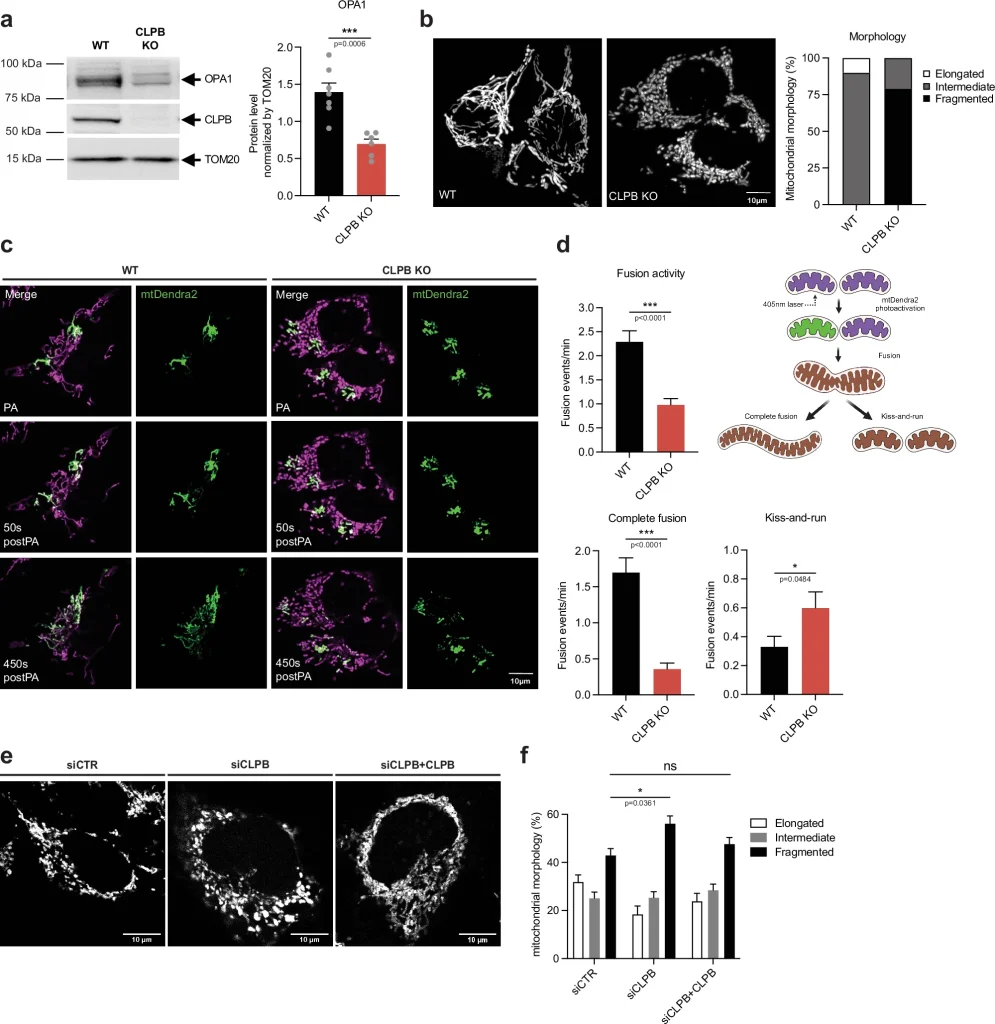
Fluorescence Lifetime Imaging (FLIM) is revolutionising the way researchers study cellular processes, and at Lambert Instruments, we’re proud to see our LIFA FLIM system at the forefront of scientific research.
In a recent study, researchers leveraged the LIFA FLIM system to investigate mitochondrial calcium dynamics, uncovering how disruptions in key proteins affect mitochondrial health. Their findings shed light on the role of CLPB, a crucial protein disaggregase, in maintaining proper mitochondrial calcium uptake and fusion behavior—an important step toward better understanding diseases linked to mitochondrial dysfunction.
Study Overview: Using FLIM to Measure Mitochondrial Ca²⁺
The study focused on measuring the fluorescence lifetime of the mitochondrial Ca²⁺ probe mtRCaMP using our LIFA FLIM system. By doing so, scientists were able to visualize how the loss of CLPB affects mitochondrial calcium uptake, revealing significant alterations in mitochondrial fusion dynamics.
This kind of time-resolved fluorescence imaging provides researchers with highly detailed insights into live-cell interactions—something that’s difficult to achieve with traditional imaging techniques.
The Role of CLPB in Mitochondrial Health
CLPB plays a critical role in ensuring mitochondrial integrity by preventing protein aggregation. The study’s findings suggest that when CLPB is absent or dysfunctional, mitochondria struggle to manage calcium signaling effectively—potentially leading to cellular stress or disease.
Such discoveries highlight how essential tools like LIFA FLIM are in uncovering the molecular mechanisms behind neurodegenerative diseases, metabolic disorders, and other conditions linked to mitochondrial dysfunction.
LIFA FLIM: Fast, High-Precision Imaging for Breakthrough Science
With its high-speed data acquisition, precision lifetime measurements, and seamless integration into fluorescence microscopes, our LIFA FLIM system is helping researchers push the boundaries of cellular imaging and molecular biology.
Whether studying calcium signaling, protein-protein interactions, or metabolic processes, FLIM provides the quantitative insights necessary for groundbreaking discoveries.
Acknowledging the Researchers
We’d like to give a big shout-out to the talented team behind this research: Benjamin Cartes Saavedra, Donato D’Angelo, and Victor Hugo Sanchez-Vazquez.
Their work continues to inspire us and demonstrates the powerful impact of scientific imaging technology in real-world applications.
Explore More
- Learn more about our LIFA Fluorescence Lifetime Imaging system
- Read the full publication: Link to study
Unveiling EGFR-HER2 Transactivation with Advanced FLIM-FRET Techniques
In a groundbreaking study led by László Ujlaky-Nagy and Szollosi Janos from the Department of Biophysics and Cell Biology at the University of Debrecen, researchers have explored the fascinating world of EGFR-HER2 transactivation. By employing cutting-edge FLIM-FRET (Fluorescence Lifetime Imaging Microscopy – Förster Resonance Energy Transfer) techniques, they gained deeper insights into the real-time molecular interactions between these two key receptors.
Advanced FLIM-FRET Technology for Real-Time Insights
To capture these intricate interactions in live cells, the research team utilized the LIFA FLIM system from Lambert Instruments. This advanced system features a modulated Multi-LED light source and the sophisticated LI-FLIM 1.1.24 analysis software, providing unmatched precision in fluorescence lifetime measurements.
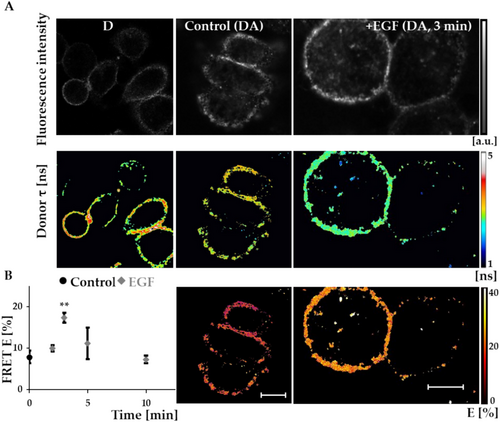
Mounted on an Olympus IX81 microscope, the LIFA FLIM system allowed for the acquisition of real-time frequency-domain FLIM-FRET data, enabling the team to observe dynamic molecular processes as they unfolded. This powerful setup provides invaluable information about protein interactions in their native environments, offering a clearer picture of cellular mechanisms at play.
The Role of EGFR-HER2 Transactivation in Cellular Signaling
EGFR (Epidermal Growth Factor Receptor) and HER2 (Human Epidermal Growth Factor Receptor 2) are both critical players in cell signaling, and their interactions are crucial for regulating various cellular functions. The transactivation between these two receptors is a key process in many biological activities, including cell growth, differentiation, and survival.
Understanding how these receptors interact can help identify potential therapeutic targets for diseases like cancer, where EGFR and HER2 are often implicated in uncontrolled cell growth. This study, utilizing the LIFA FLIM system, provides vital insights into these complex molecular interactions.
Key Technology Insights
The LIFA FLIM system’s capabilities were integral to this research, allowing the team to perform high-resolution, real-time analysis of protein interactions in live cells. The system’s high sensitivity and precision make it an essential tool for studying molecular processes at the level of individual protein interactions, offering researchers an advanced approach to cellular biology.
For more details on the LIFA FLIM system and its capabilities, you can check out the official product page here.
Further Reading
To delve deeper into this study and explore the findings of the research team, read the full publication here.
This work represents an exciting advancement in our understanding of cellular signaling and provides a foundation for future research in molecular biology and cancer therapies.

Researchers and imaging professionals, this is your last chance to acquire the HiCAM 5000, an intensified high-speed camera renowned for its ultra-sensitive, high-speed imaging capabilities. With only a limited number of units remaining, this is a last-time buy before the HiCAM 5000 is discontinued.
HiCAM 5000 – Key Features:
✅ Extreme Sensitivity – Detects single photons for ultra-low-light imaging.
✅ High-Speed Performance – Captures up to 5000 fps at 512 x 512 px resolution.
✅ Broad Spectral Sensitivity – Optimized for 375 nm – 875 nm detection.
✅ Internal Memory – Ensures seamless high-speed recordings without external bottlenecks.
The HiCAM 5000 has been trusted by researchers worldwide for plasma physics, combustion research, fluorescence imaging, and flow visualization, making it an essential tool for demanding scientific applications.
Act Now – Before It’s Gone!
This is the final opportunity to secure a HiCAM 5000 before they are no longer available.
📩 Request More Information: sales@lambertinstruments.com
Explore Other High-Performance Intensified Cameras
If the HiCAM 5000 isn’t the perfect fit for your needs, explore our full range of high-speed intensified cameras:
🔬 HiCAM – High-speed, high-sensitivity intensified imaging camera.
🔬 HiCAM Fluo – Cooled high-speed camera for fluorescence imaging.
For detailed specifications and to explore how the HiCAM 5000 or other HiCAM cameras can enhance your research, visit www.lambertinstruments.com or contact sales@lambertinstruments.com.


